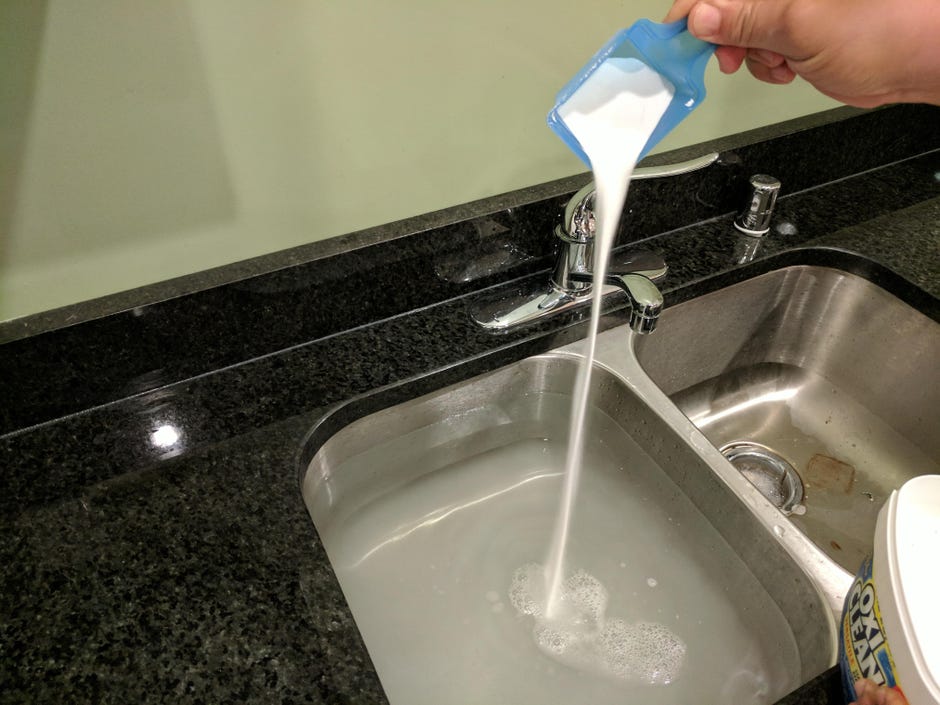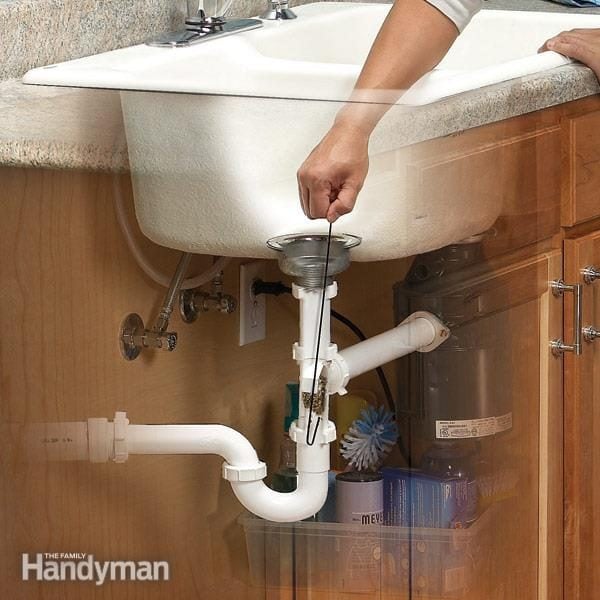Stuck With A Slow Sink - 6 Reasons Your Kitchen Drain Could Be Lagging
Stuck With A Slow Sink - 6 Reasons Your Kitchen Drain Could Be Lagging
Blog Article
We have uncovered this great article relating to Why Is My Sink Not Draining? directly below on the net and thought it made sense to relate it with you in this article.

It's not typical for your cooking area sink to congest numerous times in one month. If your sink blocks twice a week, there's some problem going on.
A blocked cooking area drain doesn't simply slow down your tasks, it weakens your entire plumbing system, little by little. Below are some common practices that motivate sink clogs, and exactly how to prevent them.
You require proper waste disposal
Reusing waste is great, however do you focus on your natural waste also? Your kitchen ought to have 2 different waste boxes; one for recyclable plastics and another for organic waste, which can end up being garden compost.
Having actually a designated trash bag will certainly aid you and also your family members avoid throwing pasta as well as various other food residues away. Typically, these remnants absorb moisture as well as end up being blockages.
The mistake isn't from your kitchen area sink in all
Perhaps the issue isn't from your kitchen area sink, yet the whole water drainage system. In such an instance, you might see that sinks and also drains pipes obtain clogged every other week. You need a professional plumbing service to fix this.
You're throwing coffee down the drain
Used coffee grounds as well as coffee beans still absorb a significant amount of moisture. They may seem tiny enough to throw down the drain, yet as time takes place they start to swell and also occupy even more room.
Your coffee premises must enter into natural waste disposal. Whatever fraction leaves (probably while you're depleting) will certainly be dealt with throughout your regular monthly clean-up.
You've been eating a lot of greasy foods
Your cooking area sink might still obtain obstructed despite organic waste disposal. This may be due to the fact that you have a diet regimen abundant in oily foods like cheeseburgers.
This grease coats the within pipelines, making them narrower and also even more clog-prone.
Utilize a plunger
Your pipeline wasn't fixed effectively to begin with
If you've been doing none of the above, yet still obtain routine clogs in your cooking area sink, you should call a plumber. There might be a trouble with exactly how your pipes were mounted.
While your plumber shows up, check for any kind of leaks or abnormalities around your kitchen area pipes. Do not attempt to deal with the pipelines yourself. This might cause a crash or a kitchen area flood.
A person tried to clean their hair in the kitchen area sink
There's a correct time and area for everything. The kitchen area sink is just not the best area to wash your hair. Cleaning your hair in the kitchen sink will certainly make it obstruct eventually unless you make use of a drain catcher.
While a drainpipe catcher could catch the majority of the fallouts, some strands might still get through. If you have thick hair, this might suffice to slow down your drain and also ultimately create a clog.
There's more dust than your pipelines can take care of
If you get fruits straight from a farm, you might see more cooking area dirt than other individuals that go shopping from a shopping center. You can quickly fix this by cleaning up the fruits and also veggies correctly before bringing them right into your house.You need proper garbage disposal
My Kitchen Sink Won’t Drain - What Should I Do?
If Your Sink Has a Garbage Disposal...
Turn on the disposal. If the disposal hums and doesn’t turn, then there’s clog in the disposal unit.
Go to your circuit breaker panel, and switch off the circuit breaker to your garbage disposal.
Back in your kitchen, double-check that your garbage disposal is off by trying to turn it on. The disposal should not move, and it should not make any noise.
Lie down underneath your sink so that you can see and access the bottom of the disposal unit. Look for a hole that looks like the head of a hex-head bolt in the center of the unit.
Place an Allen wrench inside this hole and turn it from side to side until you feel a decrease in resistance and are able to rotate the wrench completely in a single direction. This action rotates your disposal’s blade manually.
Put the wrench aside, and press the disposal unit’s reset button or switch.
Flip your garbage disposal’s circuit breaker switch back on, and turn on the unit to see if the obstruction has cleared. If it hasn’t, repeat the steps above until the obstruction is removed.
How to Unclog a Kitchen Sink Drain
If you have a double bowl sink, seal one side of the sink with an airtight lid or a second plunger before plunging the other side. Otherwise, you won’t be able to create adequate suction.
Place the cup of the plunger completely over the drain opening.
Turn on the faucet, and let the water run until it completely covers the cup of the plunger.
Start plunging by pushing the plunger down and pulling up again in order to build up suction. Make sure that the edges of the plunger stay in contact with your sink, or else you’ll lose the suction.
If you have trouble forming a seal between your sink and plunger, add petroleum jelly to the mouth of your plunger, and try again.
Plunge about five or six times before removing the plunger to see if water starts to drain properly. In some cases, you’ll even be able to feel the clog become dislodged while you plunge because suddenly there will be much less resistance. Repeat the plunging process until the clog clears.
Once water is draining properly again, run hot water down the drain for 5 minutes to help clear away grease, grime, and debris from the clog. https://www.plumbingjoint.com/blog/2019/august/my-kitchen-sink-won-t-drain-what-should-i-do-/

My Kitchen Sink Won’t Drain - What Should I Do?
If Your Sink Has a Garbage Disposal...
How to Unclog a Kitchen Sink Drain
https://www.plumbingjoint.com/blog/2019/august/my-kitchen-sink-won-t-drain-what-should-i-do-/
I'm certainly very involved in Five Ways to Fix a Slow Sink Drain and I'm hoping you liked our entry. Make sure you take a moment to distribute this blog if you enjoyed it. We enjoy reading our article about Five Ways to Fix a Slow Sink Drain.
Browse Our Site
Report this page